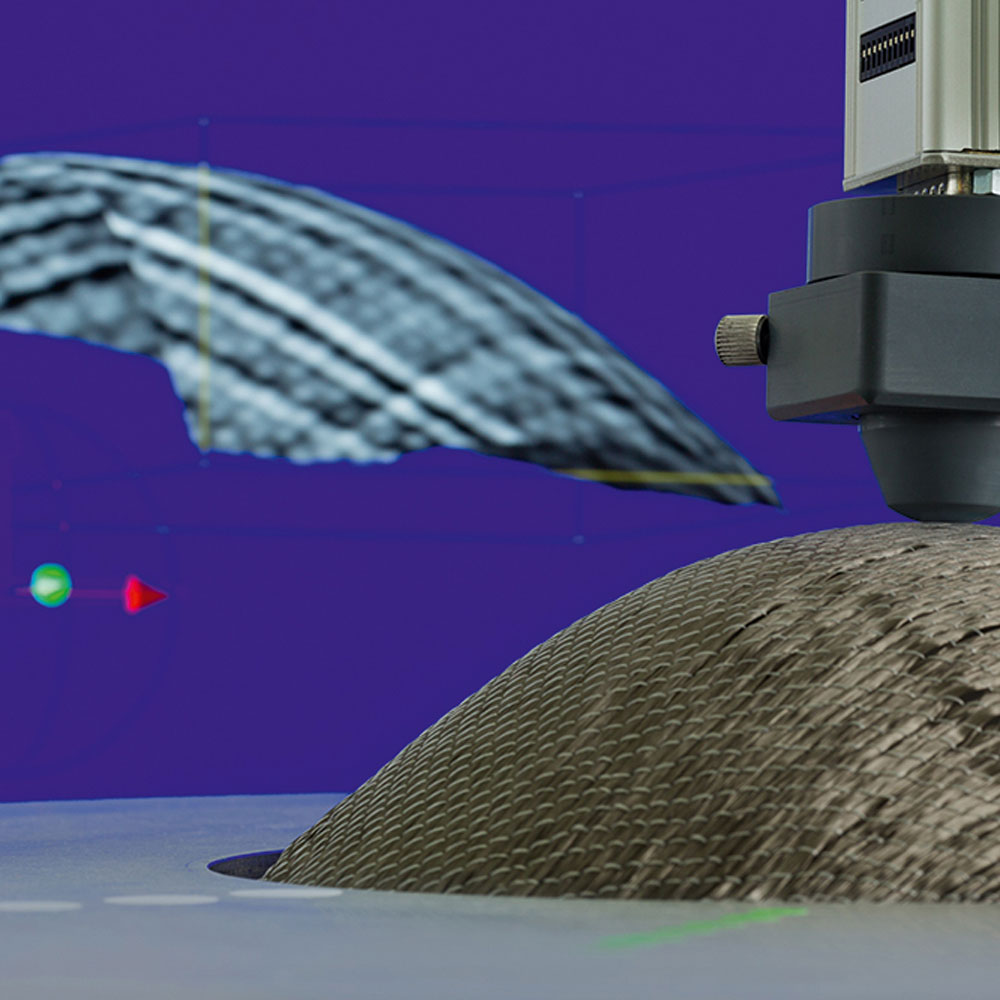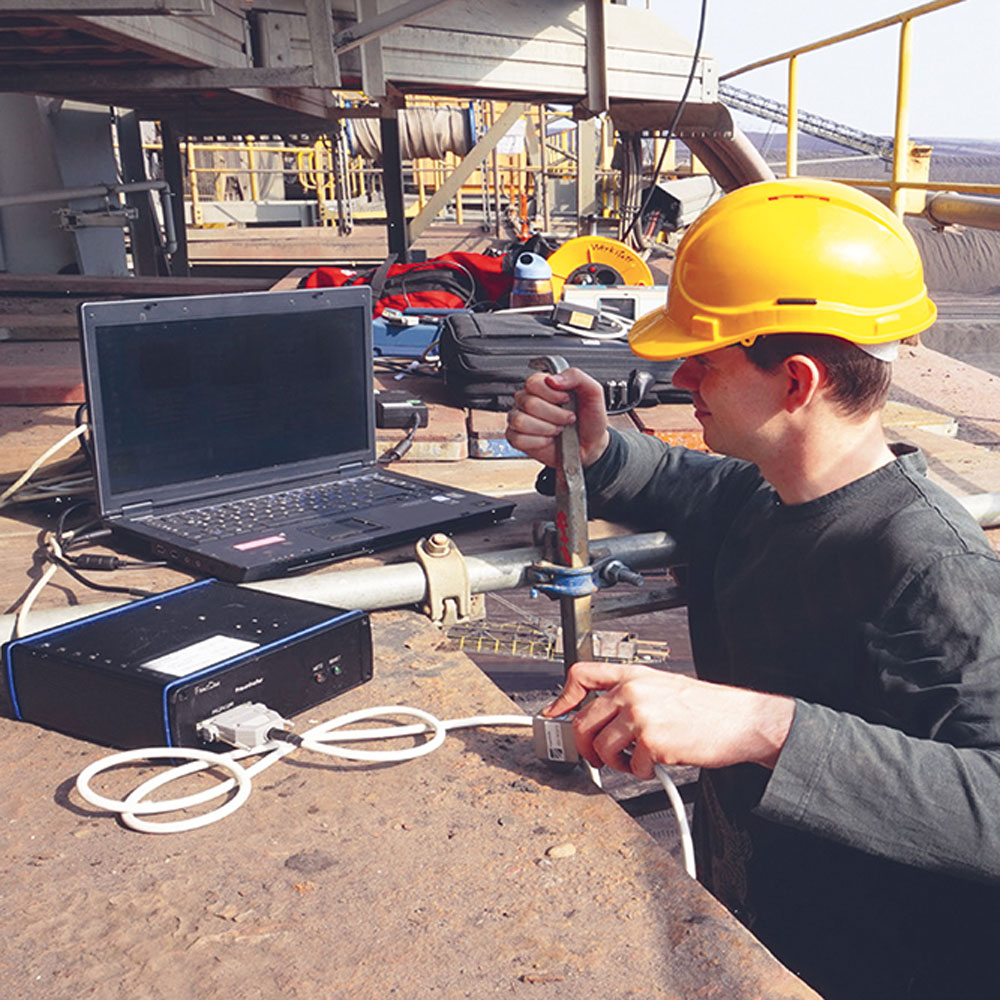
Electromagnetic methods

High-frequency eddy current methods
The eddy current method is an electromagnetic technique for non-destructive testing of metals and non-conductive or weakly conducting materials such as plastics or ceramics. It has become a key technology for quality assurance, especially in the field of light-weight construction – for all areas from the aerospace and automotive industries to energy technology – because of its high speed, operation without a coupling medium, no requirements regarding radiation protection, and ease of integration into industrial manufacturing processes.
The so-called high-frequency eddy current technique and imaging impedance spectroscopy in the frequency range of 100 kHz to 100 MHz used to analyze weakly conducting material classes such as carbon fibers and carbon fiber composites were developed at Fraunhofer IKTS. Methods knowhow covers the entire production chain – from simulation and sensors, manipulation, and electronics to device construction. Customer requirements are consistently converted to adapted measurement and testing solutions.
The EddyCus® device plattform from Fraunhofer IKTS meets the growing requirements of the light-weight construction industry and can also cater to the needs for eddy currentbased techniques for quality assurance in other areas.
Technical details
- Frequency range: up to 100 MHz
- Special sensors for fiber composite materials
- Eddy current system for individual system integration (integration kit)
- 2D and 2.5D eddy current scanning systems
- Robot-based eddy current systems for freeform parts Application fields
- Characterization of fiber layers and material properties of carbon fiber composites
- Testing of ceramics and metals
- Monitoring of hardening reactions in epoxy resins
Services offered
- Development and setup of customer-specific testing systems, including sensors, hardware, software, and manipulator technology
Micromagnetic Barkhausen noise
The micromagnetic Barkhausen noise technique is a surface characterization method that can only be used on ferromagnetic materials. The Barkhausen effect represents the interaction between an induced electromagnetic field and the component microstructure. It is especially useful for detecting stress and fatigue, but it can also be used for detecting residual austenite and cementite. Barkhausen noise is also the only non-destructive method other than x-ray diffraction that can be used to determine internal stresses independently of the microstructure.
Barriers to use of this method in practice can mainly be attributed to the large size and inflexibility of the sensors, the extreme sensitivity of the testing systems to parasitic effects, and the extensive calibration. Fraunhofer IKTS has developed smaller, more compact, and more robust test equipment to overcome these barriers. The technology is now less sensitive to environmental effects. In addition, special sensors allow for wider use and the calibration requirements can be considerably reduced through a complex algorithm.
Technical details
- Application with standard sensors or, alternatively, with multi-axis sensors or current excitation
- Transfer of raw data (integral, maximum, mean value, coercive field strength, etc.)
- Alternative transfer of calibrated materials properties (hardness, stress, retained austenite, cementite, etc.)
- Measurement services as well as conceptual design and setup of customized test equipment and/or sensors
Application fields
- Outdoor deployment in rugged environmental conditions with laboratory instruments and robust manual test equipment
- Materials characterization during the manufacturing process
- Evaluation of stress state in large-scale industrial plants and buildings
Services offered
- Development of customized sensors and test equipment
- Rental of testing systems
- Training
- Testing services

